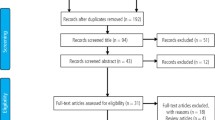Abstract
Objectives The aim of this retrospective study was to determine whether there is a difference in oral health between recreational ecstasy users and non-recreational drug users.
Study design In a cross-sectional study, dental records of 149 individuals visiting an academic dental clinic in Amsterdam who reported recreational ecstasy use, defined as no more than twice a week, were systematically analysed and compared to a group of age- and sex-matched non-drug users randomly selected from this institute. The parameters retrieved from the dental records were decayed, missed and filled teeth index (DMFT), number of endodontically treated teeth, presence of active caries lesions, periodontitis, tooth wear, xerostomia and self-reported use of oral hygiene devices.
Results Periodontitis, active caries lesions and xerostomia were statistically significantly more present in ecstasy users. Ecstasy users brush their teeth significant less frequently per day than non-recreational drug users. There were no significant differences in DMFT and in the devices used for brushing/interdental cleaning and frequency of use of these interdental devices between both groups.
Conclusion Periodontitis, active caries lesions and xerostomia are more frequently present in recreational ecstasy users compared to age- and sex-matched non-users.
Key points
-
Periodontitis, active caries lesions and xerostomia are more frequently present in recreational ecstasy users than non-recreational drug users.
-
Recreational ecstasy users and non-recreational drug users do not differ in prevalence of tooth wear.
-
Ecstasy users brush their teeth less frequently per day than non-recreational drug users.
This is a preview of subscription content, access via your institution
Access options
Subscribe to this journal
Receive 24 print issues and online access
$259.00 per year
only $10.79 per issue
Buy this article
- Purchase on Springer Link
- Instant access to full article PDF
Prices may be subject to local taxes which are calculated during checkout
Similar content being viewed by others
References
Kalant H. The pharmacology and toxicology of "ecstasy" (MDMA) and related drugs. Canada Med Assoc J 2001; 165: 917-928.
Trimbos instituut. Acute effecten van ecstasy: een overzicht van de literatuur. 2016. Available at https://www.trimbos.nl/docs/64300663-351f-4d38-8998-5ce728302985.pdf (accessed February 2022).
Nicholson T, Duncan D F, White J B. Is recreational drug use normal? J Subst Use 2002; 7: 116-123.
Degenhardt L, Bruno R, Topp L. Is ecstasy a drug of dependence?. Drug Alcohol Depend 2010; 107: 1-10.
Bearn J, O'Brien M. "Addicted to Euphoria": The History, Clinical Presentation, and Management of Party Drug Misuse. Int Rev Neurobiol 2015; 120: 205-233.
Green A R, Mechan A O, Elliott JM, O'Shea E, Colado M I. The pharmacology and clinical pharmacology of 3, 4-methylenedioxymethamphetamine (MDMA, "ecstasy"). Pharmacol Rev 2003; 55: 463-508.
Brunt T M, Koeter M W, Niesink R J M, van den Brink W. Linking the pharmacological content of ecstasy tablets to the subjective experiences of drug users. Psychopharmacology (Berl) 2012; 220: 751-762.
White C M. How MDMA's pharmacology and pharmacokinetics drive desired effects and harms. J Clin Pharmacol 2014; 54: 245-252.
Mohamed W M Y, Hamida S B, Cassel J-C, de Vasconcelos A P, Jones B C. MDMA: interactions with other psychoactive drugs. Pharmacol Biochem Behav 2011; 99: 759-774.
Peacock A, Sindicich N, Dunn M et al. Co-ingestion of energy drinks with alcohol and other substances among a sample of people who regularly use ecstasy. Drug Alcohol Rev 2016; 35: 352-358.
Verheyden S L, Henry J A, Curran H V. Acute, sub-acute and long-term subjective consequences of 'ecstasy' (MDMA) consumption in 430 regular users. Hum Psychopharmacol 2003; 18: 507-517.
McGrath C, Chan B. Oral health sensations associated with illicit drug abuse. Br Dent J 2005; 198: 159-174.
Dumont G J H, Verkes R J. A review of acute effects of 3,4-methylenedioxymethamphetamine in healthy volunteers. J Psychopharmacol 2006; 20: 176-187.
Brand H S, Dun S N, Nieuw Amerongen A V. Ecstasy (MDMA) and oral health. Br Dent J 2008; 204: 77-81.
Dinis-Oliveira R J, Caldas I, Carvalho F, Magalhães T. Bruxism after 3,4-methylenedioxymethamphetamine (ecstasy) abuse. Clin Toxicol (Phila) 2010; 48: 863-864.
Vizeli P, Liechti M E. Safety pharmacology of acute MDMA administration in healthy subjects. J Psychopharmacol 2017; 31: 576-588.
Boyle N T, Connor T J. Methylenedioxymethamphetamine ('Ecstasy')-induced immunosuppression: a cause for concern? Br J Pharmacol 2010; 161: 17-32.
Breivik T, Bogen I L, Haug K H et al. Effects of long-term exposure of 3,4-methylenedioxymethamphetamine (MDMA; "ecstasy") on neuronal transmitter transport, brain immuno-regulatory systems and progression of experimental periodontitis in rats. Neurochem Int 2014; 72: 30-36.
Thomson W M, Poulton R, Broadbent J M et al. Cannabis smoking and periodontal disease among young adults. JAMA 2008; 299: 525-531.
Brand H S, Gonggrijp S, Blanksma C J. Cocaine and oral health. Br Dent J 2008; 204: 365-369.
Mateos-Moreno M-V, Del-Río-Highsmith J, Riobóo-García R, Solá-Ruiz M-F, Celemín-Viñuela A. Dental profile of a community of recovering drug addicts: Biomedical aspects. Retrospective cohort study. Med Oral Patol Oral Cir Bucal 2013; DOI: 10.4317/medoral.18669.
Shekarchizadeh H, Khami M R, Mohebbi S Z, Ekhtiari H, Virtanen J I. Oral Health of Drug Abusers: A Review of Health Effects and Care. Iran J Public Health 2013; 42: 929-940.
Rijswijk A, Slot D E, van der Weijden G A. Cannabisgebruik en mondgezondheid. In Aps J K M (ed) Tandheelkundig jaar 2014. pp 251-262. Houten: Bohn Stafleu van Loghum, 2014.
Antoniazzi R P, Zanatta F B, Rösing C K, Feldens C A. Association Among Periodontitis and the Use of Crack Cocaine and Other Illicit Drugs. J Periodontol 2016; 87: 1396-1405.
Baghaie H, Kisely S, Forbes M, Sawyer E, Siskind D J. A systematic review and meta-analysis of the association between poor oral health and substance abuse. Addiction 2017; 112: 765-779.
Schulz-Katterbach M, Imfeld T, Imfeld C. Cannabis and caries-does regular cannabis use increase the risk of caries in cigarette smokers? Schweiz Monatsschr Zahnmed 2009; 119: 576-583.
Redfearn P J, Agrawal N, Mair L H. An association between the regular use of 3,4 methylenedioxy-methamphetamine (ecstasy) and excessive wear of the teeth. Addiction 1998; 93: 745-748.
Milosevic A, Agrawal N, Redfearn P, Mair L. The occurrence of toothwear in users of Ecstasy (3,4-methylenedioxymethamphetamine). Community Dent Oral Epidemiol 1999; 27: 283-287.
Liechti M E, Gamma A, Vollenweider F X. Gender differences in the subjective effects of MDMA. Psychopharmacology (Berl) 2001; 154: 161-168.
Lavelle A, Honner V, Docherty J R. Investigation of the prejunctional alpha2-adrenoceptor mediated actions of MDMA in rat atrium and vas deferens. Br J Pharmacol 1999; 128: 975-980.
Bexis S, Docherty J R. Effects of MDMA, MDA and MDEA on blood pressure, heart rate, locomotor activity and body temperature in the rat involve alpha-adrenoceptors. Br J Pharmacol 2006; 147: 926-934.
Miranda-Rius J, Brunet-Llobet L, Lahor-Soler E, Farré M. Salivary Secretory Disorders, Inducing Drugs, and Clinical Management. Int J Med Sci 2015; 12: 811-824.
Ligtenberg A J M, Liem E H S, Brand H S, Veerman E C I. The Effect of Exercise on Salivary Viscosity. Diagnostics (Basel) 2016; DOI: 10.3390/diagnostics6040040.
Cho C M, Hirsch R, Johnstone S. General and oral health implications of cannabis use. Aust Dent J 2005; 50: 70-74.
Cockburn N, Pradhan A, Taing M W, Kisely S, Ford P J. Oral health impacts of medications used to treat mental illness. J Affect Disord 2017; 223: 184-193.
Nittayananta W, Talungchit S, Jaruratanasirikul S et al. Effects of long-term use of HAART on oral health status of HIV-infected subjects. J Oral Pathol Med 2010; 39: 397-406.
Pavithra S, Ranganathan K, Rao U K, Joshua E, Rooban T, Kumarasamy N. Impact of highly active antiretroviral therapy on salivary flow in patients with human-immuno deficiency virus disease in Southern India. J Oral Maxillofac Pathol 2013; 17: 17-22.
Kumar J V, Baghirath P V, Naishadham P P, Suneetha S, Suneetha L, Sreedevi P. Relationship of long-term highly active antiretroviral therapy on salivary flow rate and CD4 Count among HIV-infected patients. J Oral Maxillofac Pathol 2015; 19: 58-63.
Lam-Ubol A, Rungsiyanont S, Vacharotayangul P, Sappayatosok K, Chankanka O. Oral manifestations, salivary flow rates and Candida species in Thai HIV-infected patients. J Clin Exp Dent 2019; DOI: 10.4317/jced.55384.
Falisi G, Rastelli C, Panti F, Maglione H, Arcega R Q. Psychotropic drugs and bruxism. Expert Opin Drug Saf 2014; 13: 1319-1326.
Arrue A, Gómez F M, Giralt M T. Effects of 3,4-methylenedioxymethamphetamine ('Ecstasy') on the jaw-opening reflex and on the alpha-adrenoceptors which regulate this reflex in the anaesthetized rat. Eur J Oral Sci 2004; 112: 127-133.
Bertazzo-Silveira E, Kruger C M, Porto De Toledo I et al. Association between sleep bruxism and alcohol, caffeine, tobacco, and drug abuse: A systematic review. J Am Dent Assoc 2016; 147: 859-866.
Ahmed M, Islam S, Hoffman G R. Widespread oral and oropharyngeal mucosal ooedema induced by ecstasy (MDMA): A case for concern. Br J Oral Maxillofac Surg 2007; 45: 496-498.
Naisas H, Zaszlos K J M. Een vrouw met dikke lippen. 2015. Available at https://www.ntvg.nl/system/files/publications/a8665.pdf (accessed February 2022).
Nugent G, Basyuni S, McAnerney D, Cameron M. Oral surgery: Mutilation following MDMA. Br Dent J 2017; DOI: 10.1038/sj.bdj.2017.53.
Biancardi M R, da Silveira H A, Fernandes D et al. Ecstasy Abuse and Its Effects on the Oral Mucosa. J Craniofac Surg 2019;DOI: 10.1097/SCS.0000000000005033.
Schröder A S, Andresen-Streichert H, Anders S. Swollen Lips After a Night of Partying-An Allergic Reaction to Ecstasy? J Forensic Sci 2019; 64: 1281-1282.
Grocock R. The relevance of alcohol to dental practice. Br Dent J 2018; 223: 895-899.
Clapp O, Morgan M Z, Fairchild R M. The top five selling UK energy drinks: implications for dental and general health. Br Dent J 2019; 226: 493-497.
Wetselaar P, Vermaire J H, Visscher C M, Lobbezoo F, Schuller A A. The Prevalence of Tooth Wear in the Dutch Adult Population. Caries Res 2016; 50: 543-550.
Murali R V, Rangarajan P, Mounissamy A. Bruxism: Conceptual discussion and review. J Pharm Bioallied Sci 2015; DOI: 10.4103/0975-7406.155948.
Curran H V, Robjant K. Eating attitudes, weight concerns and beliefs about drug effects in women who use ecstasy. J Psychopharmacol 2006; 20: 425-431.
Trimbos instituut. Jaarbericht 2018 Nationale Drug monitor. 2018. Available at https://www.trimbos.nl/wp-content/uploads/sites/31/2021/09/af1643-jaarbericht-nationale-drug-monitor-2018.pdf (accessed February 2022).
European Monitoring Centre for Drugs and Drug addiction. European Drug Report 2020: Trends and Developments. 2020. Available at https://www.emcdda.europa.eu/publications/edr/trends-developments/2020_en (accessed February 2022).
Wagner J, Arteaga S, D'Ambrosio J et al. A patient-instructor programme to promote dental students' communication skills with diverse patients. J Dent Educ 2007; 71: 1554-1560.
Solomons Y F, Moipolai P D. Substance abuse: case management and dental treatment. SADJ 2014; 69: 298-315.
Centraal Bureau voor de Statistiek. Gezondheidsenquete/leefstijlmonitor. 2014. Available at https://www.cbs.nl/nl-nl/maatwerk/2015/29/drugsgebruik-onder-bevolking-van-15-tot-en-met-64-jaar-2014 (accessed February 2022).
Acknowledgements
We would like to thank M. Thorn for his assistance in retrieving information from the axiUm database.
Author information
Authors and Affiliations
Contributions
Emma E. J. van Kempen: conceptualisation; data curation; formal analysis; investigation; methodology; project administration; and writing - original draft. Jan G. A. M de Visscher: supervision; writing - review and editing; and validation. Henk S. Brand: conceptualisation; data curation; methodology; project administration; formal analysis; validation; resources; and supervision.
Corresponding author
Ethics declarations
The authors declare no conflicts of interest.
Rights and permissions
About this article
Cite this article
van Kempen, E., de Visscher, J. & Brand, H. Are periodontitis, dental caries and xerostomia more frequently present in recreational ecstasy users?. Br Dent J 232, 389–395 (2022). https://doi.org/10.1038/s41415-022-4040-1
Received:
Accepted:
Published:
Issue Date:
DOI: https://doi.org/10.1038/s41415-022-4040-1



